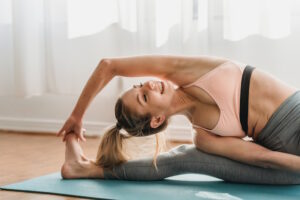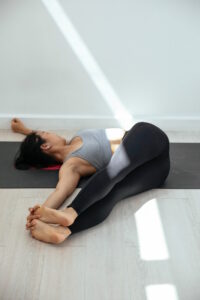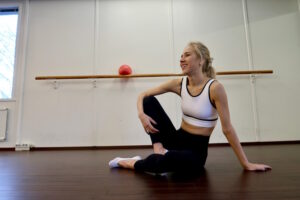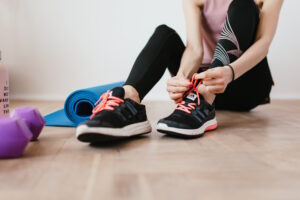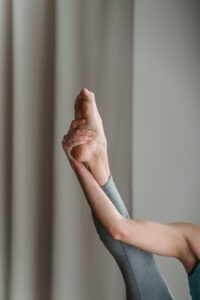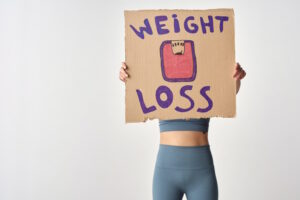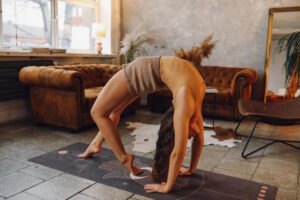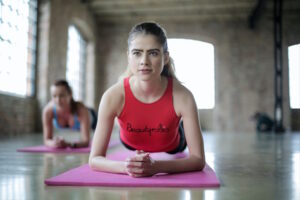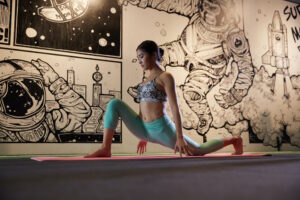
Starting a Pilates practice as a beginner is an exciting step towards improving your fitness and well-being. However, like any exercise routine, it’s common to face challenges when it comes to finding motivation and staying committed. In this guide, we will explore strategies to motivate yourself to do Pilates, discuss ways to stay motivated and committed, provide tips on starting exercising and staying motivated, and highlight what to expect from beginners Pilates.
How can I motivate myself to do Pilates?
Motivating yourself to do Pilates can be achieved through the following strategies:
1. Set Clear Goals: Establish clear and achievable goals for your Pilates practice. Whether it’s improving core strength, increasing flexibility, or enhancing overall fitness, having a specific target can provide motivation and a sense of purpose.
2. Find Your Why: Identify the reasons why you want to do Pilates. It could be for better health, stress relief, injury prevention, or personal growth. Reminding yourself of these reasons can help you stay motivated and committed to your practice.
3. Create a Routine: Schedule regular Pilates sessions into your weekly routine. Treat them as non-negotiable appointments with yourself. Consistency is key to building a habit and staying motivated.
4. Make it Enjoyable: Find ways to make your Pilates practice enjoyable. Experiment with different class formats, instructors, or types of Pilates (mat, reformer, etc.) to discover what resonates with you. Incorporate music, set up a pleasant workout environment, or practice with a friend to make it a positive and enjoyable experience.
5. Track Your Progress: Keep a record of your Pilates sessions, noting the exercises you’ve accomplished, improvements you’ve noticed, or milestones you’ve reached. Tracking your progress can be highly motivating and serve as a reminder of how far you’ve come.
How do you stay motivated and committed?
To stay motivated and committed to your Pilates practice, consider the following strategies:
1. Find an Accountability Partner: Partner up with someone who shares similar fitness goals or join a Pilates community. Having a workout buddy or a support system can provide accountability and keep you motivated.
2. Mix Up Your Routine: Avoid monotony by diversifying your Pilates routine. Try new exercises, explore different class formats, or incorporate props and equipment to keep your practice fresh and exciting.
3. Reward Yourself: Set up small rewards for achieving your Pilates goals. Treat yourself to a massage, a new workout outfit, or a relaxing day off after completing a certain number of sessions. Rewards can help reinforce positive habits and keep you motivated.
4. Seek Inspiration: Surround yourself with sources of inspiration. Follow Pilates instructors or enthusiasts on social media, read books or articles on Pilates, or watch inspiring videos. Seeing others’ progress and passion can fuel your own motivation.
5. Embrace Variety: Explore other forms of exercise alongside Pilates. Cross-training with activities like yoga, cardio workouts, or strength training can add variety, prevent boredom, and enhance overall fitness.
How do I start exercising and stay motivated?
To start exercising and stay motivated, consider these tips:
1. Start with Small Steps: Begin with achievable goals and gradually build up your exercise routine. Starting small reduces the chance of feeling overwhelmed and increases the likelihood of success.
2. Prioritize Consistency Over Intensity: Focus on being consistent with your exercise routine rather than pushing for maximum intensity. Consistency builds habits and fosters long-term commitment.
3. Schedule Exercise Time: Treat your exercise sessions as essential appointments. Set aside dedicated time in your schedule, and make it a priority to show up for yourself and your health.
4. Embrace Variety and Fun: Engage in activities that you genuinely enjoy. Choose exercises that bring you pleasure and incorporate variety to keep things interesting and enjoyable.
5. Set Realistic Expectations: Be patient with yourself and set realistic expectations. Progress takes time, and there will be ups and downs along the way. Celebrate small victories and be kind to yourself during the process.
What to expect from beginners Pilates?
In beginners Pilates, expect to learn and practice the foundational principles of Pilates, such as proper alignment, breath control, and core engagement. You’ll be introduced to basic exercises that focus on building core strength, enhancing flexibility, and improving body awareness. Beginners Pilates classes are designed to be accessible and supportive, providing modifications and adaptations for different fitness levels and body types. Expect a nurturing and non-judgmental environment where you can learn and grow at your own pace.
In this comprehensive guide to Pilates for beginners and finding motivation and staying committed, we explored strategies for motivating yourself to do Pilates, including setting clear goals, finding your “why,” creating a routine, making it enjoyable, and tracking your progress. We discussed ways to stay motivated and committed, such as finding an accountability partner, diversifying your routine, rewarding yourself, seeking inspiration, and embracing variety. Additionally, we provided tips on starting exercising and staying motivated, emphasizing small steps, consistency, scheduling exercise time, embracing variety and fun, and setting realistic expectations. Lastly, we highlighted what to expect from beginners Pilates, focusing on the foundational principles, basic exercises, modifications, and a supportive learning environment. By implementing these strategies and understanding what to expect, you can cultivate motivation and commitment in your Pilates journey, leading to long-term success and fulfillment.
